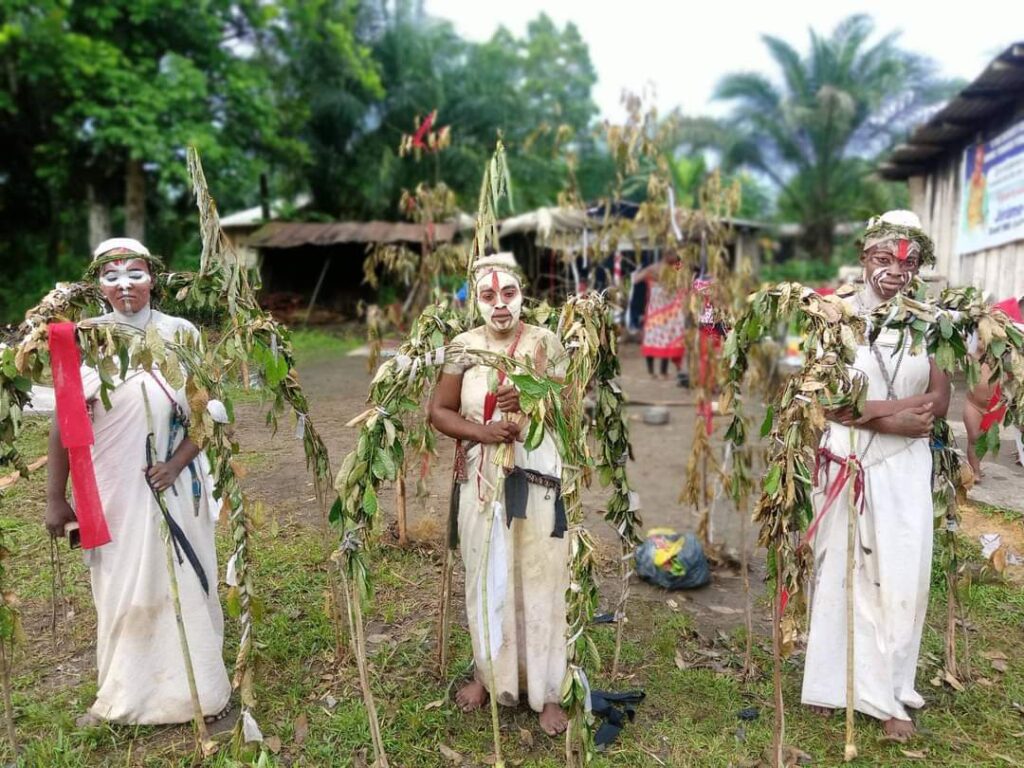Bwiti is a complex initiatory society originating from the Mitsogo or Gapinzi groups in the Ngounié province of Gabon. This society has spread extensively across central and southern Gabon. This article explores Bwiti, its structure, and the various Bwiti branches that form this intricate cultural and spiritual network.
The Structure of Bwiti
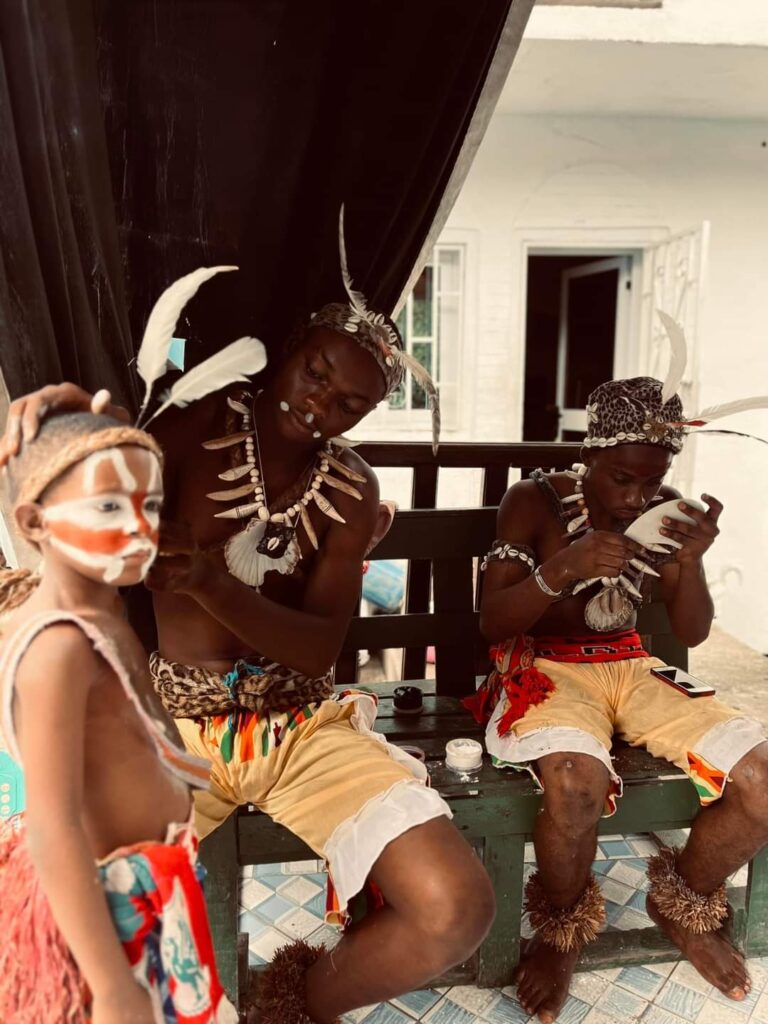
An Initiatory Society
Bwiti is fundamentally an initiatory society, characterized by a clear division between the profane (Etema) and the initiated (Banzi). Initiation involves consuming the hallucinogenic roots of the iboga shrub (Tabernanthe iboga) to induce visionary states. These visions and their interpretations validate the initiation process.
Hierarchical Structure
Bwiti operates on a hierarchical principle of seniority, where elders (Nima) command juniors (Banzi and Kombo). However, it is an acephalous society, meaning each community functions autonomously with a father or mother initiator or a council of elders at its head.
Symbolism and Ceremonies
The metaphor of the tree (getete) and its branches (mitabe) is central to Bwiti’s symbolism. Regular ceremonies involve all initiates, reinforcing the society’s cohesion and hierarchical structure. The iboga plays such a crucial role that it often symbolizes the entire initiatory society.
Branches of Bwiti
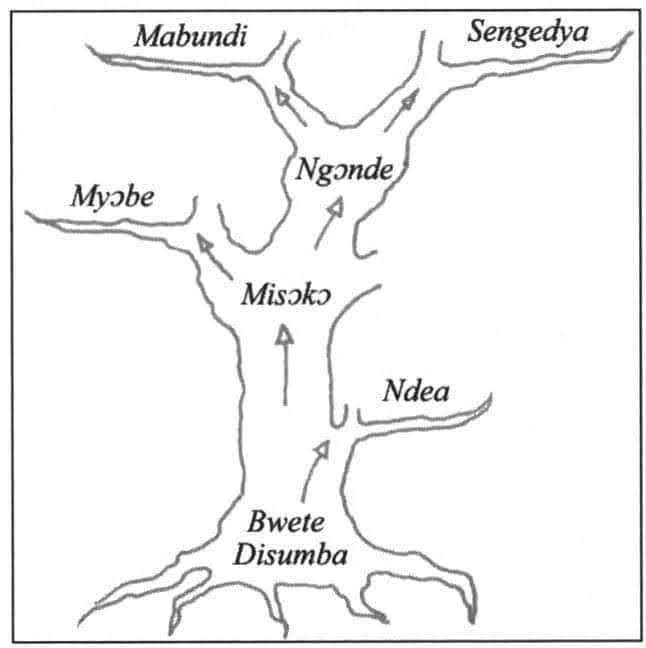
Bwiti Disumba
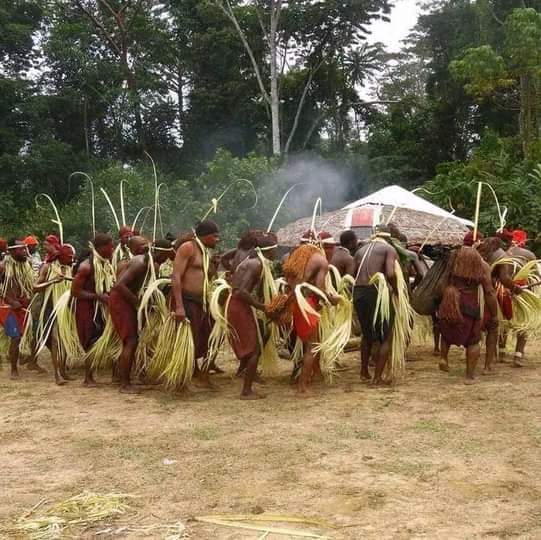
The Bwiti Disumba is the mother branch, historically and hierarchically preeminent. It is exclusively masculine and serves both an identity and religious function. Boys must be initiated during adolescence (typically between 10 and 15 years) to participate in community decisions. Disumba ceremonies revolve around ancestral worship, with initiatory visions often involving journeys to the ancestral land and encounters with mythic entities.
Characteristics:
Strictly reserved for men.
Deeply religious with a strong focus on ancestor worship.
Relies on oral traditions to recount the Genesis from the creation of the world to humanity.
- Bwiti N’Dea a Kange: Known as the “Bwiti of Lamentations,” it emerged from Disumba with a martial theme, reserved for the Kange or “endurers,” and is associated with resistance against colonization.
- Bwiti Misoko: Developed from Disumba, focusing on healing and consultation.
Evolution and Related Branches:
Bwiti Ndea
The Bwiti Ndea is closely related to Disumba, differing mainly in its symbolic martial themes, reflecting historical conflicts between the Mitsogo and Bakele. Functionally, it is nearly identical to Disumba and often intertwined with it in Mitsogo villages.
Bwiti Misoko
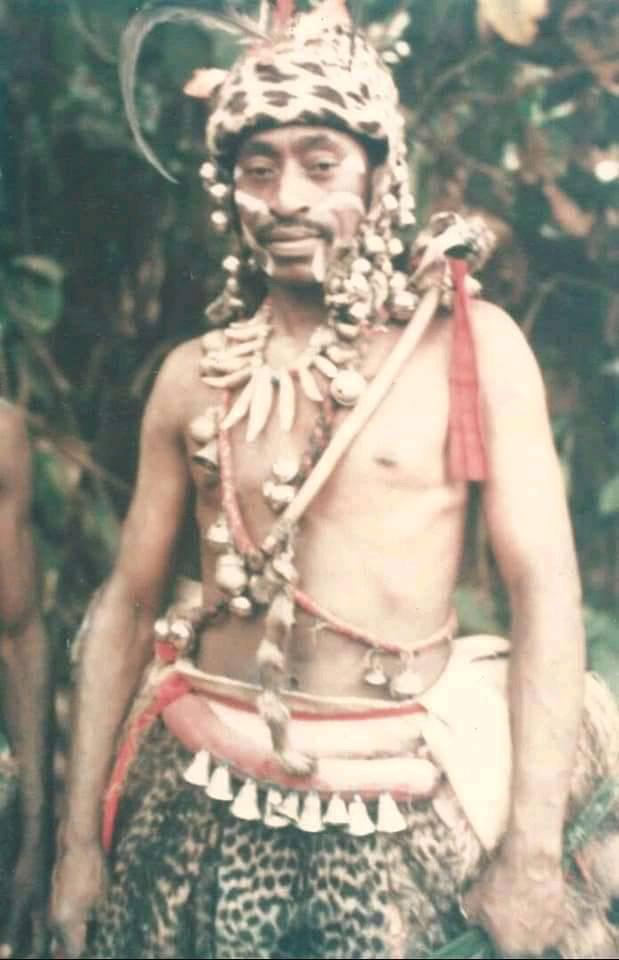
The Bwiti Misoko branch specializes in therapeutic functions. Unlike Disumba, which focuses on collective spiritual initiation, Misoko’s initiation is individual and circumstantial, often following repeated misfortunes or illnesses. The visions here are diagnostic, identifying the source of affliction rather than engaging with mythic entities.
Characteristics:
- Involves a large pharmacopoeia of natural substances.
- Anti-sorcery focus to combat witchcraft.
- Was initially for men only but has become more inclusive of women in recent times.
Sub-Branches:
- Myobe: The oldest branch, introduced by the Tsogos.
- Ngonde: Has two styles:
- Ngonde Bosuka: The oldest movement created by the Tsogho tribe.
- Ngonde na Dipuma: A newer movement practiced by the Puvi and Masangu tribes.
- Senguedya: A recent branch created by a Masangu bwitiste who separated from Ngonde to create his own movement.
- Mabundi: The female branch within Bwiti Misoko. Refers to both the initiated women and their dance. It is also closely related to Mabandji, the female branch of Disumba.
The Babongo and Their Influence
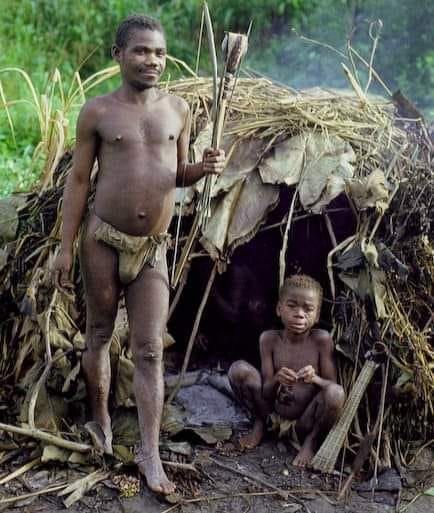
While not a distinct branch of Bwiti, the Babongo Pygmies are often credited with being the originators of the Bwiti tradition. The Babongo practice a rite called Mudimu, a rite of passage linked to a male’s first big game kill. This ritual, primarily male but with rare female initiates, is said to have influenced the development of bwiti branches.
Mudimu Rite and Bwiti Origins
The Mudimu ritual involves propitiatory hunting prayers (Buluma) and has been incorporated into Bwiti Misoko as a ritual sequence. According to many initiates, the Bwiti’s origins lie with the Pygmies. As one Bapunu initiator from Libreville states, “Bwiti is a religion created by our Pygmy ancestors in the virgin forest.” Another Bapunu initiate adds, “it was the Pygmies who first practiced the Bwiti. The Bwiti was performed in the bush, in the forest. Then the Mitsogo brought it back to the village.”
Bwiti Akoa
The Akoa Pygmies also have a non-sacred dance derived from Bwiti Disumba called the Bwiti Akoa Dance of Rejoicing. This dance involves no real initiation or visions and is performed solely by the Akoa Pygmies as a form of cultural expression. There is no Iboga in this branch.
Bwiti Njembe
The Njembe branch is another significant part of the Bwiti society. Njembe is unique in its inclusion of women, making it a mixed-gender branch. This branch focuses on communal healing and spiritual practices. Njembe rituals often incorporate elaborate dances, songs, and the use of sacred instruments, reflecting a blend of therapeutic and religious elements.
Bwiti Fang or Mimbwiri
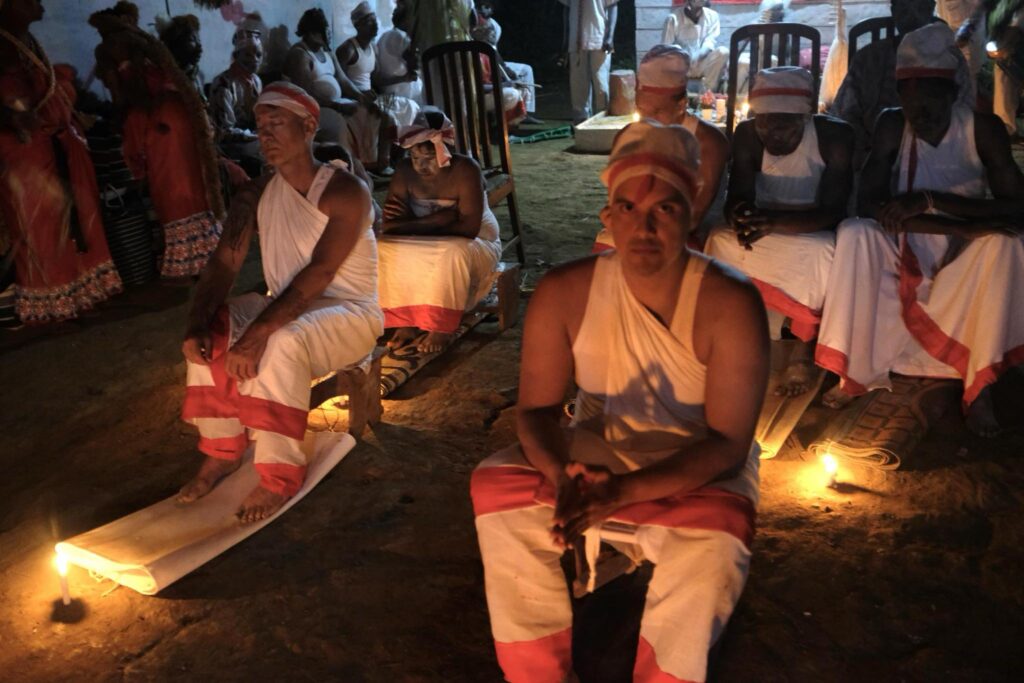
Origins and Evolution
The Bwiti Fang, also known as Mimbwiri, is a syncretic branch that emerged in the early 20th century, blending elements from Byeri (Fang ancestor worship), Disumba, and Christianity. This adaptation was facilitated by the Fang people’s contact with the Mitsogo and other groups practicing Bwiti, leading to a reappropriation and modification of Bwiti branches.
The Fang people, prior to adopting Bwiti, practiced Byeri, a spiritual practice based on ancestor worship and therapeutic healing that relied on the consumption of the hallucinogenic plant ‘Alan’ (Alchornea floribunda) in their Byeri initiatory ceremonies. Byeri involved consulting ancestors to find solutions to societal problems such as marriages, locations for gathering food, and conflict resolutions. Healers in Byeri would enter trance states, allowing ancestor spirits to possess them and provide assistance for patients and those seeking guidance.
Characteristics:
- Syncretic Practices: Bwiti Fang incorporates elements of Fang ancestor worship (Byeri), traditional Bwiti practices, and Christian rituals. This blending reflects the influence of colonialism and missionary activities.
- Possession Rituals: Known for its possession rituals, where participants may be possessed by spirits, a practice not as emphasized in other Bwiti branches. Healers enter trance states, allowing ancestor spirits to possess them and assist in healing and providing guidance.
- Liturgical Reforms: Bwiti Fang has undergone significant liturgical reforms, introducing new songs, dances, and ceremonial practices influenced by Christian liturgy.
Subdivisions
René Bureau identifies twelve subdivisions within Bwiti Fang, highlighting its diversity and internal variations. This branch is less homogeneous compared to others, reflecting its reformist and adaptive nature. Here are a few of the Fang sub-branches. This is a non exhaustive list.
- Ndea Narizanga: Strongly syncretic with Christianity.
- Ekongui: Female-led.
- Njembe: Mixed gender.
- Ndeya Kanga: Known for ingesting extremely large amounts of Iboga during initiations. Sometimes 100 times more than standard ceremony doses.
Gender Inclusivity
Bwiti Fang is notable for its inclusion of both men and women in its practices, contrasting with the strictly male-oriented Disumba branch. This inclusivity has been a point of contention with other Bwiti practitioners who view it as a deviation from traditional practices.
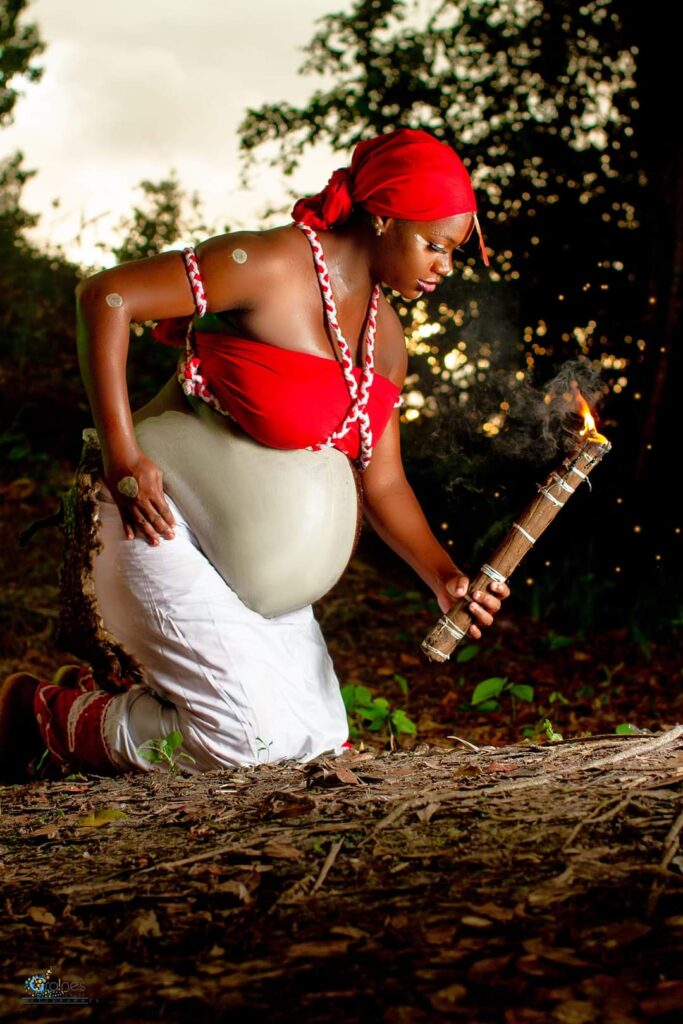
Ritual Practices
Initiation: Similar to other Bwiti branches, Bwiti Fang initiation involves consuming iboga. However, the experience is often more personal and less socially structured, reflecting the individual’s spiritual journey.
Ceremonial Structure: Bwiti Fang ceremonies are characterized by a blend of traditional Bwiti elements and Christian influences, such as the use of hymns and prayer.
Consultation and Healing: Fang healers work with ancestors to find solutions to societal issues and heal illnesses. Ancestor consultation is integral to decisions on marriages, food gathering, and resolving conflicts. Healers enter trance states, allowing ancestor spirits to possess them, thereby guiding and assisting the patient or individuals seeking advice.
At Bwiti Roots we organise Bwiti Fang Initiation retreats to our village in Gabon. To find out more you can visit this link.
Other Bwiti Branches
Beyond the major branches, Bwiti also includes several other sects, each with unique practices and focuses. Most branches are not known publicly. Branches evolve all the time and different lineages practice Bwiti differently within each branch. Some other branches include:
- Ndjôbi
- Togbo.
- Mbondè.
- Tako.
- Tombo.
Initiation Process
To become a Nima (Master Bwiti), a neophyte undergoes several stages:
- Banzi (Initiate).
- Nganga (Apprentice Healer).
- Kombo (Intermediate/Advanced Initiate).
- Nima (Master).
The progression varies for each initiate, often taking several years. Not all initiates become Masters.
Conclusion
Bwiti, with its diverse branches, represents a rich network of cultural, religious, and therapeutic traditions in Gabon. Each branch, while sharing core elements like the use of iboga, has its unique focus and functions, reflecting the adaptability and complexity of this initiatory society. Understanding Bwiti offers a glimpse into the profound spiritual and cultural heritage of the Gabonese people.
References:
https://www.amazon.co.uk/Bokaye-Essai-Bwiti-Fang-Gabon/dp/2738447236
https://karolinum.cz/data/clanek/10749/Theol_12_1_0143.pdf
